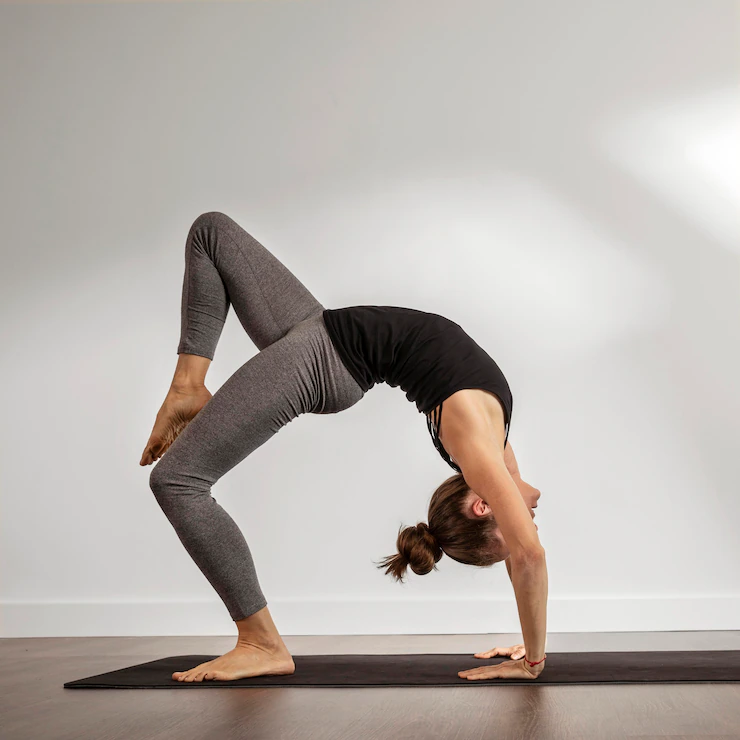I. Introduction

A. The Importance of Cleaning Your Yoga Mat Regularly
How to clean manduka yoga mat?
Yoga has become increasingly popular in recent years, with millions of people around the world incorporating it into their lives. Whether you practice yoga at a studio, gym, or in the comfort of your own home, it’s essential to keep your yoga mat clean. Regular cleaning not only helps to maintain the longevity and integrity of your mat, but it also promotes good hygiene and prevents the buildup of bacteria and germs.
B. Why It’s Important to Use the Right Cleaning Methods
Using the right cleaning methods for your yoga mat is just as crucial as cleaning it regularly. Certain cleaning products and techniques can damage the mat’s material, causing it to deteriorate quicker and lose its effectiveness. It’s important to use gentle, non-abrasive cleaners to ensure the mat remains durable and safe for use.
II. Cleaning Your Manduka Yoga Mat
A. Pre-Cleaning Preparation
Before diving into the cleaning process, it’s essential to prepare your Manduka yoga mat properly. Start by removing any excess dirt, dust, or debris from the surface of the mat. You can do this by gently wiping it down with a dry cloth or using a handheld vacuum to suck up any loose particles. This step will make the cleaning process more effective and prevent any abrasive particles from scratching the mat during the cleaning process.
B. Natural Ways to Clean Your Manduka Yoga Mat
For those who prefer natural cleaning methods, there are several options for effectively cleaning your Manduka yoga mat. One popular and straightforward method is to create a DIY cleaning solution using natural ingredients such as water, vinegar, and essential oils. To make this cleaning solution, mix equal parts water and vinegar in a spray bottle and add a few drops of your favorite essential oil for a pleasant scent. After spraying the solution onto the mat, use a clean cloth to wipe it down, ensuring that the entire surface is thoroughly cleaned. Vinegar is known for its antibacterial properties, making it an excellent natural cleaner for yoga mats.
Another natural cleaning option is to use a mixture of water and mild dish soap. Simply fill a bowl with water and add a small amount of dish soap, then use a clean cloth to gently scrub the mat’s surface. After cleaning, rinse the mat with clean water to remove any soap residue and allow it to air dry completely before using it again. It’s important to note that excessive soap usage can leave a residue on the mat, so be sure to rinse it thoroughly.
C. Using Commercial Cleaners for Deep Cleansing
While natural cleaning methods are effective for regular maintenance, a deep cleanse using commercial cleaners may be necessary from time to time. When using commercial cleaners, it’s crucial to choose products specifically designed for yoga mats and follow the manufacturer’s instructions carefully. Many yoga mat cleaners are formulated to be gentle yet effective, removing built-up sweat, dirt, and bacteria without causing damage to the mat’s material.
When using a commercial yoga mat cleaner, start by spraying the product onto the mat and allowing it to sit for a few minutes to penetrate and lift any dirt or residue. Then, use a clean cloth to gently scrub the surface, paying particular attention to any heavily soiled areas. After cleaning, rinse the mat thoroughly with water to remove any cleaner residue and allow it to air dry completely before using it again.
III. Drying and Maintenance

A. Proper Drying Techniques
Once you have thoroughly cleaned your yoga mat, it’s crucial to ensure that it dries properly to prevent the growth of mold and mildew. After rinsing the mat with water, gently squeeze out any excess moisture. Avoid wringing the mat, as this can cause damage to the material. Instead, lay the mat flat on a clean, dry towel and gently roll it up, pressing down to absorb as much moisture as possible. After this initial drying step, unroll the mat and hang it over a shower rod or outdoor clothesline to air dry. It’s essential to allow the mat to dry completely before rolling it up for storage or use.
B. Maintenance Tips to Keep Your Mat Clean and Fresh
In addition to regular cleaning, there are several maintenance tips to keep your yoga mat clean and fresh. One simple maintenance practice is to wipe down your mat with a clean, damp cloth after each use to remove any sweat or dirt that may have accumulated during your practice. This quick wipe-down can help prevent the buildup of grime and bacteria, extending the time between deep cleanings.
Another maintenance tip is to rotate your mat regularly, especially if you practice yoga frequently. By rotating the mat, you can ensure that both sides receive equal wear and exposure to cleaning and maintenance practices, prolonging its lifespan.
IV. Additional Tips and Precautions
A. Storing Your Yoga Mat Correctly
Properly storing your yoga mat is essential for maintaining its quality and preventing unnecessary wear and tear. When not in use, it’s best to store your mat in a cool, dry place away from direct sunlight. Direct sunlight can cause the material to degrade over time, leading to a shorter lifespan for your mat. Additionally, avoid storing the mat in damp or humid environments, as this can promote the growth of mold and mildew. To prevent your mat from rolling up when stored, you can use a mat strap or simply store it flat.
B. Avoiding Harsh Chemicals and Methods for Cleaning
When cleaning your yoga mat, it’s important to avoid using harsh chemicals or abrasive cleaning methods that can damage the material. Harsh chemicals, such as bleach or ammonia-based cleaners, can break down the mat’s surface and compromise its integrity. Similarly, rough scrubbing or excessive rubbing can cause pilling or deterioration of the mat’s surface. Always opt for gentle, non-abrasive cleaners and use soft cloths or sponges for cleaning to protect the mat from damage.

V. Benefits of a Clean Yoga Mat
A. Promoting Hygiene and Preventing Bacteria Growth
Maintaining a clean yoga mat offers numerous benefits, the most crucial being the promotion of hygiene and the prevention of bacteria growth. During a yoga practice, you come into direct contact with your mat, and any sweat, dead skin cells, and dirt can accumulate on its surface over time. If left uncleaned, these residues can create an environment where bacteria, fungi, and other microorganisms thrive. Regular cleaning and proper maintenance of your yoga mat help eliminate these potential health hazards, creating a hygienic surface for your practice.
Furthermore, for individuals who practice hot yoga or engage in vigorous yoga sessions that induce heavy perspiration, a clean mat becomes even more crucial. The accumulation of sweat provides an ideal breeding ground for bacteria and germs. By consistently cleaning your yoga mat, you reduce the risk of skin infections, allergies, and respiratory issues that can result from exposure to these harmful microorganisms.
B. Enhancing Your Yoga Practice through a Clean Mat
Aside from the hygienic benefits, a clean yoga mat can significantly enhance your yoga practice. Firstly, a fresh and clean mat provides a pleasant and inviting surface to practice on, promoting a positive and uplifting environment for your yoga sessions. The absence of odors and visible dirt contributes to an overall feeling of cleanliness and comfort, allowing you to fully immerse yourself in your practice without distractions.
A clean mat can also support better traction and stability during your yoga poses. A buildup of sweat and oils from the skin, along with dust and debris, can compromise the mat’s grip and make it prone to slippage. This can hinder your ability to maintain proper alignment and stability in your poses, potentially leading to injuries. Regular cleaning and maintenance of your mat help restore its traction and grip, enabling you to perform your asanas with confidence and security.
Conclusion
In conclusion, cleaning your Manduka yoga mat is an essential part of maintaining its quality and hygiene. By following the right cleaning methods and using gentle, non-abrasive cleaners, you can ensure that your mat remains in top condition for years to come. Whether you prefer natural cleaning solutions or commercial yoga mat cleaners, incorporating regular cleaning into your yoga practice will not only extend the life of your mat but also provide a clean and safe surface for your practice. So, roll out your mat, give it a good clean, and continue to enjoy the many benefits of your yoga practice.
